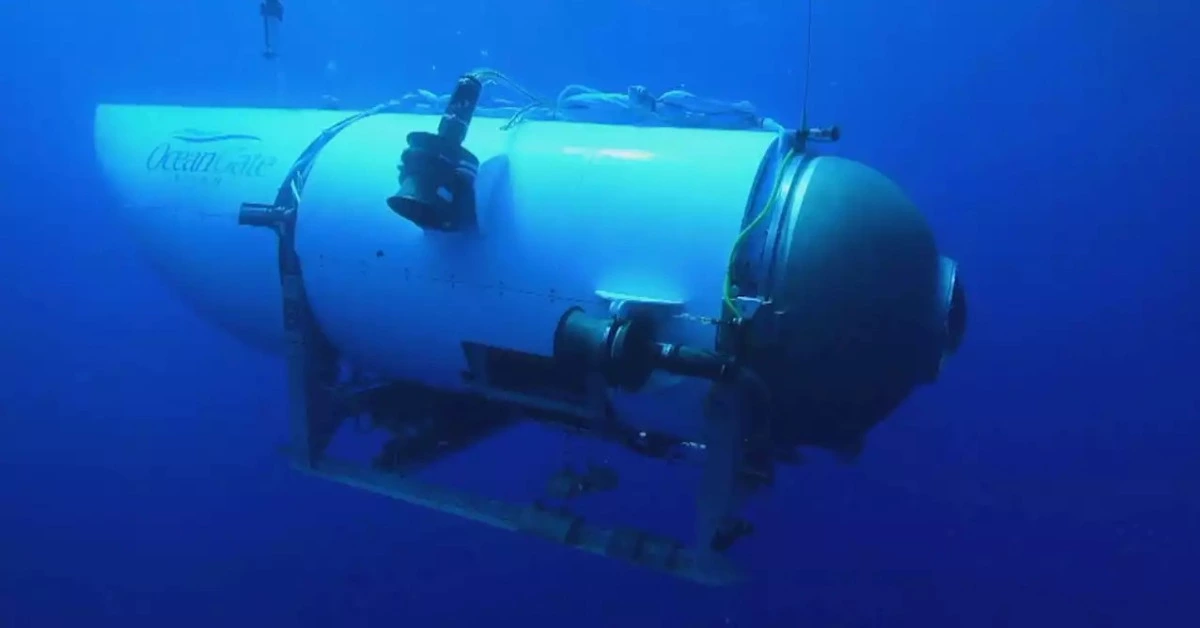Missing Submersible near Titanic Wreckage intensifies as search efforts continue and concerns grow over limited oxygen supply. The Underwater noises were reportedly detected in the North Atlantic Ocean while U.S. and Canadian crews searched for the small vessel carrying five people that had vanished two days earlier in a dive to the Titanic wreckage site, the U.S. Coast Guard announced early Wednesday.
According to the Coast Guard’s Twitter account, a Canadian aircraft had reportedly heard “underwater noises in the search area” shortly before 12:30 a.m. ET. This prompted remotely operated vehicle operations to search for the origin of the noises.
The Coast Guard stated on Twitter that the Remotely operated vehicle (ROV) searches had reportedly yielded negative results but were continuing. The data from the P-3 aircraft had reportedly been shared with U.S. Navy experts for further analysis, which would reportedly be considered in future search plans.
Search efforts had reportedly been intensified by U.S. and Canadian ships and aircraft on Tuesday due to concerns about the oxygen supply. The Coast Guard reported that approximately 10,000 square miles had reportedly been searched as of Tuesday morning.
Capt. Jamie Frederick of the First Coast Guard District in Boston reportedly stated that the Titan, as the submersible is known, reportedly had “about 40 hours of breathable air left” around 1 p.m. ET on Tuesday, indicating that its oxygen supply could reportedly be depleted by Thursday morning.
It was also reportedly mentioned that an underwater robot had reportedly started searching in the vicinity of the Titanic wreckage site, and there was reportedly an effort to bring salvage equipment to the scene in case the submersible was found. The U.S. military had reportedly deployed three C-130 aircraft and three C-17 transport planes to assist in the search, and the Canadian military reportedly provided a patrol aircraft and two surface ships.
Rear Adm. John Mauger, commander of the First Coast Guard District, reportedly stated on NBC’s “Today” show that his crews were reportedly working to prioritize underwater search efforts and get equipment to the area. Experts reportedly mentioned that the challenges of the search operation were reportedly difficult.
A letter obtained by The New York Times reportedly revealed that OceanGate, the company operating the missing submersible, had reportedly been warned about the potential for a “catastrophic” outcome due to its approach and vessel design. The letter, written by members of the Marine Technology Society, reportedly expressed concerns about safety problems and the breach of professional conduct codes.
Dr. Albert Rizzo, chief medical officer of the American Lung Association, reportedly explained that those on board the submersible would reportedly experience organ failure as oxygen levels decrease. Dr. Alexander Isakov, an Emory University emergency medicine physician, reportedly mentioned the concerns related to compromised carbon dioxide filtration and the risk of hypothermia.
The search for the missing submersible was reportedly taking place in the North Atlantic Ocean, approximately 900 miles east of Cape Cod and at a depth of up to 13,000 feet. The U.S. Coast Guard was reportedly using sonar technology and aircraft to search both the ocean surface and below.
The submersible, named Titan, reportedly launched on Sunday morning and lost contact with its support vessel about an hour and 45 minutes later. The wreckage of the Titanic, which OceanGate Expeditions has visited multiple times, is located at a depth of nearly 2½ miles.
The submersible reportedly had one pilot and four “mission specialists” on board. Hamish Harding, a British adventurer, and Shahzada Dawood and his son Suleman, members of a prominent Pakistani business family, were reportedly among the passengers. French explorer and Titanic expert Paul-Henry Nargeolet was also reportedly on board.
CBS News correspondent David Pogue reportedly shared his experience of joining a previous trip to see the Titanic wreckage.

